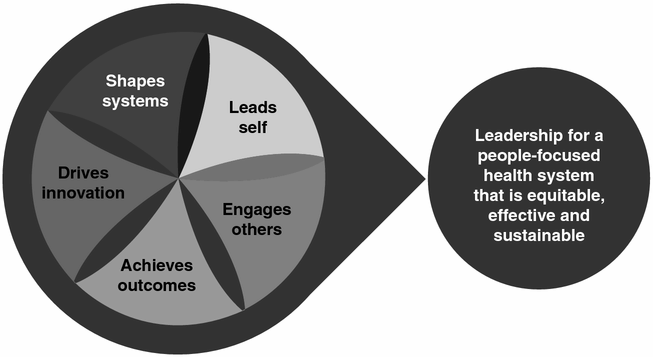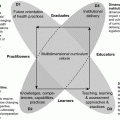- Leadership
Leadership is a process of social influences that maximise the efforts of others towards the achievement of a goal.
Why has this move away from doctors always being legally responsible happened? In many situations the doctor is not always present or reachable, for example, in remote, rural locations and some community settings. As Australia has an increasingly ageing population, there are not enough doctors and other health care professionals to service their needs. This has led to the realisation that new health care models and ways of working need to be developed. Health Workforce Australia (HWA) (2012) stated:
The projections contained in HW [Health Workforce] 2025 show us that unless we start doing things differently, Australia is going to experience continuing health care shortages. To build a health workforce that is able to meet the health care needs of the Australian community in a sustainable way, the next steps will involve seeking national agreement on the actions identified, progressing outcomes through collaboration and consultation and implementing results across health and higher education sectors.
It is not just Australia where these changes are needed and Australia is not alone in believing that collaboration is key. Oandasan et al. (2006) found that collaboration is likely the key to addressing problems such as staff shortage, work related stress, and burn out in the health workforce.
Over the past decade, numerous interprofessional education and collaborative practice initiatives have taken place internationally. Some were initiated as a result of the World Health Organization’s (2010) Framework for Action on Interprofessional Education and Collaborative Practice as outlined in Chapter 3 (see Figure 3.3).
Leadership competencies
HWA (2013) has, therefore, looked at the leadership capabilities required for the new leaders working in these collaborative environments and has identified a clear goal: leadership for a people-focused health system that is equitable, effective and sustainable, namely:
- ‘People-focused’ aligns with evidence that the best health care has the person at its centre, and that workplace satisfaction leads to better clinical and consumer outcomes.
- ‘Health system’ includes all the organisations and people whose primary purpose is to improve health.
- ‘Equitable’ reflects evidence that health inequalities exist within populations, and hospitals and health care services can be sources of inequality for patients, clients and workers.
- ‘Effective’ means the best possible clinical, consumer, quality and team outcomes.
- ‘Sustainable’ focuses on meeting the health care needs of both current and future generations.
- Capabilities
Forman, Jones & Thistlethwaite (2014) define capability as ‘has been used in preference to competence in one IPE framework, as it is considered by some educators to reflect more optimally the necessity that learners and professionals respond and adapt to health care and systems changes’.
It also identified five capabilities through a process of consultation and review of international work. In June 2013, these capabilities were approved by the Australian Health Ministers’ Advisory Council as a nationally agreed health leadership framework.
Figure 5.1 shows how these identified capabilities work together. The detailed descriptions of these capabilities are given in Table 5.1.

Figure 5.1 Leadership capabilities (HWA, 2013) Reproduced with permission from Health LEADS Australia.
| Leads self |
|---|
| A leader is always a work in progress. A leader knows their strengths and limitations, and commits to self-reflection and improvement. A leader understands and displays self-awareness, self-regulation, motivation, empathy, and social skills. A leader demonstrates integrity in their role and context, and shows resilience in challenging situations. |
| Capabilities | Descriptors |
|---|---|
| Is self-aware | Understands and manages the impact of their background, assumptions, values and attitudes on themselves and others |
| Seeks out and takes opportunities for personal development | Actively reflects on their performance as a leader and assumes responsibility for engaging in learning and growth |
| Has strength of character | Is honest, trustworthy and ethical, and models integrity, courage and resilience |
| Engages others |
|---|
| A leader enables people to engage with a vision or goal through stories and explanations that make sense of complexity. A leader encourages others to see and accept opportunities to contribute, learn and grow. |
| Capabilities | Descriptors |
|---|---|
| Values diversity and models cultural responsiveness | Recognises first Australians, and ensure that all people, including consumers and workers are treated with dignity and respect in all health care settings |
| Communicates with honesty and respect | Is approachable, listens well, presents ideas and issues clearly, and participates in difficult conversations with consumers and colleagues with humility and respect |
| Strengthens consumers, colleagues and others | Inspires and enables others to share ideas and information, to take opportunities to grow and lead, and to collaborate for high performing groups and teams |
| Achieves outcomes |
|---|
| A leader is a person who works to make a difference. A leader sets a direction that is inspiring and motivating, enables energy and effort to succeed and keeps an eye on the goal. A health leader works with compassion to influence the quality of care and the sustainability of the system. |
| Capabilities | Descriptors |
|---|---|
| Influences and communicates the direction | Collaborates with consumers, colleagues and others to identify, influence and set goals that achieve the vision |
| Is focused and goal oriented | Influences alignment of resources and decisions with goals and evidence to enable quality, people-centred health work and continuous improvement |
| Evaluates progress and is accountable for results | Continually monitors and improves, celebrates achievements and holds self and others accountable for individual and service outcomes |
| Drives innovation |
|---|
| Innovation in health is not just for a new product. It includes fundamental changes to business and models of care to achieve people-centred quality services. A key factor for successful innovation is passionate leadership, without which the status quo cannot be challenged. |
| Capabilities | Descriptors |
|---|---|
| Champions the need for innovation and improvement | Inspires and leads others to question, recognise where change is needed, canvas possibilities, support fresh thinking, take risks and collaborate for improvement |
| Builds support for change | Influences informed discussion on health issues in every encounter, encourages diverse voices and consumer involvement and advocates for better outcomes |
| Positively contributes to spreading innovative practice | Initiates and maintains momentum for assessing, sharing and celebrating changes for people-centred service and system improvement |
| Shapes systems |
|---|
| Health is a complex, evolving system where all the parts, including services, legislation and funding, are interconnected. A change in one part has implications for the whole. A leader recognises patterns of interdependency, is able to explain trends, and facilitate strategies that achieve maximum benefits and minimise unintended harm or negative consequences. |
| Capabilities | Descriptors |
|---|---|
| Understands and applies systems thinking | Communicates system awareness and negotiates within and across health teams, services and sectors to improve individual and local health outcomes |
| Engages and partners with consumers and communities | Involves consumers and communities in decision making for health policy, education and training, and health care delivery and improvement |
| Builds alliances | Promotes understanding, respect and trust between different groups, professions, organisations, sectors and points of view to enable effective collaboration, enhance connectivity, and minimise unintended consequences |
These leadership capabilities, blended with the interprofessional capabilities that we identified in our MIPPE-D Framework, should help develop our health care workers to work in any environment. The following case study, in a dementia care setting, illustrates the changes in leadership that are occurring in this interprofessional environment.
- Dementia
Dementia is now referred to as a neurocognitive disorder (NCD) (American Psychiatric Association, 2013), that is, the result of chronic or progressive damage to the brain.
Stay updated, free articles. Join our Telegram channel

Full access? Get Clinical Tree





